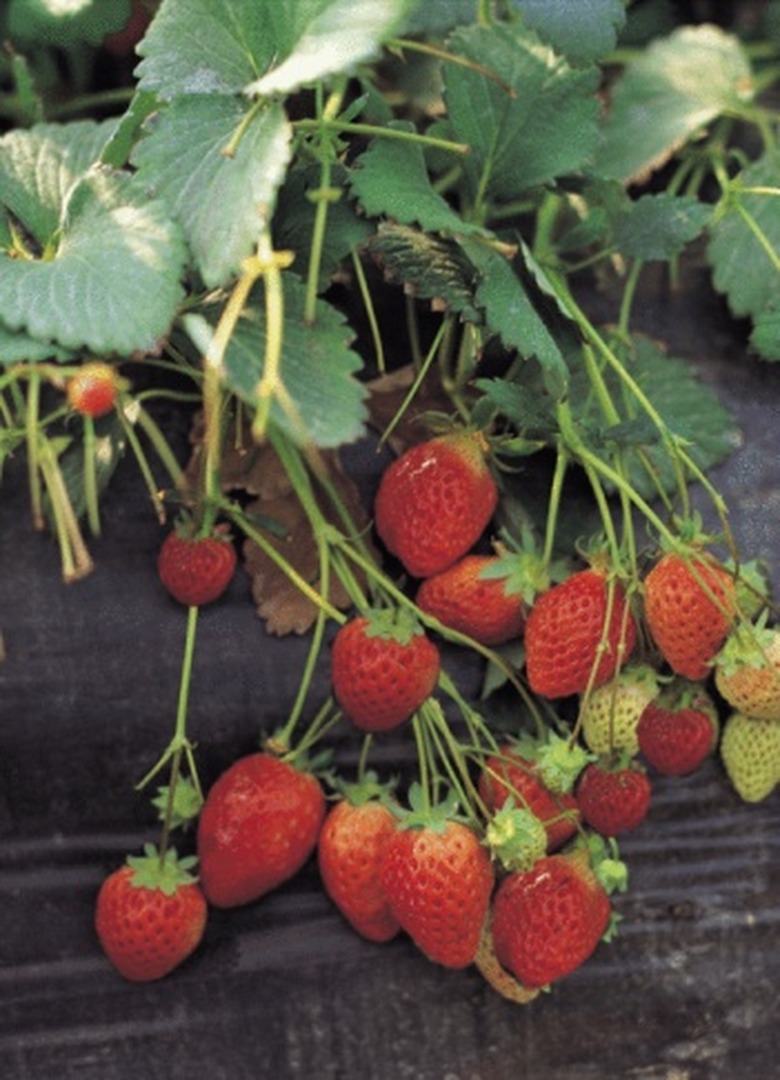How To Keep Strawberries Off The Ground
Things Needed
- Landscaping cloth
- Shovel
- Carpet knife
- Garden spade
Tip
If you've already planted the strawberries before laying down the landscaping cloth, you can just lay it over the plants and cut x's in it directly above the plants. Grip the leaves, stems and fruit with your hand through the x and push the cloth down to the ground around the plant's stems. You can sprinkler irrigate, flood irrigate or set up a drip system beneath the landscaping cloth to water the strawberries.
Strawberries left to sit on the ground to grow often end up rotting or riddled with insects. When heavy rains come and puddle in the strawberry patch, the wet conditions invite mold to grow on the strawberry fruit. If you want your strawberries to remain bug- and mold-free during the growing and ripening seasons, you have to keep them off the ground. You don't have to worry about this until the plants actually start producing fruit, at which point the weight of the fruit will cause the berry to hang down to the ground.
Step 1
Cover the area where you want to grow your strawberries using black landscaping cloth. Use a shovel to line the edges of the cloth with dirt to keep it from blowing around.
Step 2
Cut an "x" in the landscaping cloth wherever you want to plant a strawberry plant. Use a carpet knife to cut the x's. Plants should be spaced 12 inches apart.
- Strawberries left to sit on the ground to grow often end up rotting or riddled with insects.
- Cover the area where you want to grow your strawberries using black landscaping cloth.
Step 3
Plant the strawberries by opening the flaps of each of the x's and digging a small hole with a garden spade. Dig a hole deep enough and wide enough to keep the roots of the plant from getting crowded. Fold the flaps down around the stems of the plants after planting.
Step 4
Water and watch the plants produce fruit. As the plants grow and produce fruit, the heavier fruit will settle down on the landscaping cloth above the ground. The cloth allows for proper water drainage and acts as a barrier to keep troublesome insects from eating the strawberries.
